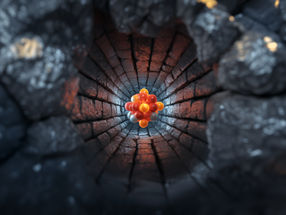W. C. Heraeus increases production range in Electrodes for Cardiac Pacemakers
The business unit "Medical Technology" of W. C. Heraeus GmbH & Co. KG, a subsidiary of the globally active precious metals and technology Group Heraeus Holding GmbH, has started now to mass-produce so-called helix electrodes for cardiac pacemakers. The transfer of the coiling and grinding know-how for the production of this state-of-the-art electrode has almost been completed. Thus the Hanau-based company now possesses the complete process chain for the production of this electrode and strengthens its position as one of the few medical technology producers worldwide that can offer a wide range of high-quality components for cardiac pacemakers and defibrillators to prevent ventricular fibrillation.
"The complete take-over of this particular production technology represents for us an obvious addition to our portfolio, which makes a lot of sense to us," explains the business unit's managing director Dr. Jürgen Wachter. "This is a substantial step forward towards our goal to become a one-stop shop for medical technology companies." Because of the strong vertical integration of production processes that W. C. Heraeus possesses in precious metals - starting from alloying and melting via semifinished products to the final complex component - each process step can be controlled optimally and a constant high product quality can be guaranteed. This is a decisive advantage in order to perform well against competitors, which can mostly be found in the U.S.A.
The coiled or helically wound screw electrode, thus the name helix, is made from a platinum iridium wire that is covered by a micro porous, biocompatible layer of titanium nitride or iridium oxide. This layer helps to obtain low thresholds during the stimulation of the myocardium. Through an active fixation in the tissue, the helix electrode offers the one major advantage that the implant site can be freely selected. In contrast to that, passive electrodes, so called head electrodes, can only be implanted where the myocardium has trabeculae (little cardiac muscle bars) on which the ties of the electrode can be hooked. That is why special implant techniques and sites at the heart without trabeculae are bound to the use of helix electrodes.
The helix electrode, which is fixated in the right atrial or in the right heart ventricle, is an impulse transmitter and a sensor at the same time in order to adapt the frequency of the stimulation - which is controlled flexibly by a microchip in modern pacemakers - in an optimal way to meet the different stress situations of the human body. Through special transmission lines, so-called leads whose wires are also produced by the business unit, the electrode is connected with the pacemaker device, which is usually implanted below the right collarbone.
The business unit "Medical Technology" of W. C. Heraeus develops, produces and distributes a wide range of primarily implantable, precious metal-based products for medical technology such as semifinished products, micro precision parts, electrodes and cases for cardiac pacemakers and defibrillators as well as coronary and peripheral stents.
.
Most read news
Other news from the department business & finance

Get the chemical industry in your inbox
By submitting this form you agree that LUMITOS AG will send you the newsletter(s) selected above by email. Your data will not be passed on to third parties. Your data will be stored and processed in accordance with our data protection regulations. LUMITOS may contact you by email for the purpose of advertising or market and opinion surveys. You can revoke your consent at any time without giving reasons to LUMITOS AG, Ernst-Augustin-Str. 2, 12489 Berlin, Germany or by e-mail at revoke@lumitos.com with effect for the future. In addition, each email contains a link to unsubscribe from the corresponding newsletter.

























































